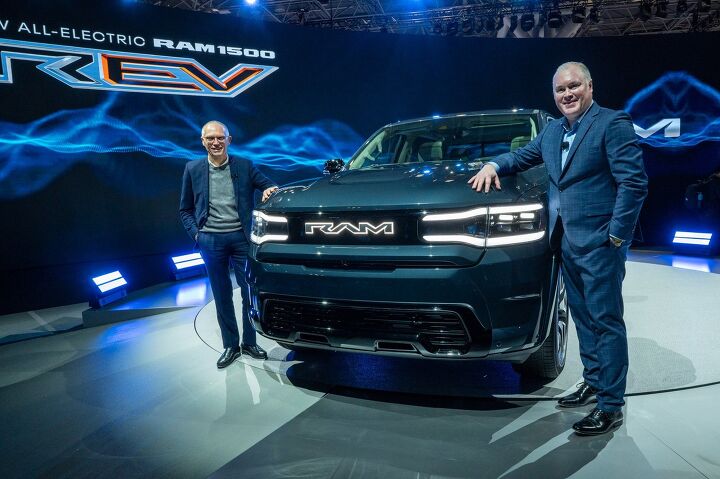
On Wednesday, Stellantis CEO Carlos Tavares suggested that Tesla’s profitability was on the decline due to the automaker having to confront some of the issues of a legacy manufacturer.
"They are entering my world, the world of tight pricing, cost competitiveness, and the operational issues that a big company like ours may face," Tavares told the press during a presentation of Stellantis’ half-year financial report.
Since everyone loves a little industrial drama, the statement became national news. But is Tesla really on the decline because it’s finally on the level of other multinational automakers or is Tavares just coping?
"The result of the fact that Tesla is now entering my world, is that their profitability moved from more than 17 [percent] in the first half of 2022 to 10.5 [percent] in the first half of 2023," the CEO was quoted as saying by Reuters. "They were more profitable than Stellantis, now they are less profitable than Stellantis.”
Tavares repeatedly suggesting that Tesla is now entering into his world is sincerely cringey. But he’s not wrong about the company's finances. The only problem is that things aren’t so simple when you look at them on a quarterly basis. If you just focus on Q2, Tesla still looks pretty good.
The EV brand reported adjusted earnings of $3.1 billion ( 91 cents a share) which is up 20 percent from the second quarter last year. That’s higher than analysts were targeting and the same can be said of its profit margins. Tesla enjoyed a profit margin of 18.2 percent in Q2.
While that’s still smaller than the 25 percent enjoyed in 2022, it’s hardly a dismal failure and doesn’t tell the whole story. Automotive revenue was up 47 percent this quarter, excluding revenue from the sale of regulatory credits, and sales volume jumped up a whopping 83 percent — showcasing that Tesla looks to be chasing volume, rather than trying to maximize its margins.
That seems to go against the premise that the brand is now trying to play the same game as legacy manufacturers. Keep in mind that Tesla doesn’t just sell EVs, it also owns what’s about to become the dominant mode of charging electric vehicles away from home.
“Our operating margin remained healthy… even with price reductions in Q1 and early Q2,” Tesla said earlier this month. “The challenges of these uncertain times are not over, but we believe we have the right ingredients for long-term success.”
Meanwhile, Stellantis has announced a rise in its revenue and operating profit for the first half of this year with a margin on adjusted EBIT almost unchanged at 14.4 percent. But that also beat the estimates thrown around by market experts.
"What has been said by the Tesla CEO [Elon Musk], whom I respect totally, is that they prefer growth to profitability. And we'll see to which extent they will be also challenged by the Chinese," Tavares continued.
"If we are racing for the bottom in terms of facing the Chinese with price cuts, Tesla will have problems with that strategy before we do, because we are more profitable than Tesla.”
This is pretty tough talk from a company that doesn’t sell a lot of EVs inside of North America. Stellantis is supposed to deliver an affordable EV (starting below $27,000) next year. But Tesla remains the top dog in terms of volume by a staggering margin and has started lowering its prices in anticipation of more direct competition.
We cannot say how things will play out in the future. But Tavares seems to be intentionally ignoring the larger picture here. Stellantis has loads of desirable products that your author would happily park in his driveway. But there’s not a chance in hell I would take one of its EVs over a Tesla and I’m not even terribly fond of the American brand.
While it’s undeniable that Tesla has to exist in the same world as other manufacturers and couldn’t rely on hype forever, the brand is doing what it can to grow swiftly and ensure it remains relevant on the global market.
Meanwhile, Stellantis’ leadership allegedly wants half of its sales in the United States (and all of its sales in Europe) to be entirely electric by 2030. But meaningful headway is only being made in Europe. North American sales are still totally dominated by gasoline-powered models (a few of which are about to be discontinued) and yet the market still comprises 57 percent of Stellantis’ adjusted operating income and just about half of its total revenue.
The earnings report offered by Stellantis seems to showcase that the company is in good health. But it doesn’t appear to be playing the same game as Tesla, especially when it hasn’t figured out how to make EVs work for its bottom line.
[Image: Stellantis]
Become a TTAC insider. Get the latest news, features, TTAC takes, and everything else that gets to the truth about cars first by subscribing to our newsletter.
via Autobuzz Today
Comments
Post a Comment